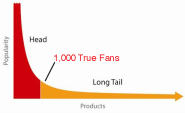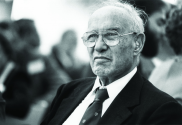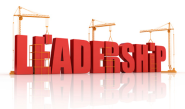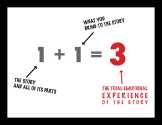-
About
- About Listly
- Community & Support
- Howto
- Chrome Extension
- Bookmarklet
- WordPress Plugin
- Listly Premium
- Privacy
- Terms
- DMCA Copyright
- © 2010-2025 Boomy Labs
 Marc Binkley
Marc Binkley
Listly by Marc Binkley
A collection of the 25 best business articles I've discovered

Sales departments tend to believe that marketers are out of touch with what’s really going on with customers. Marketing believes the sales force is myopic—too focused on individual customer experiences, insufficiently aware of the larger market, and blind to the future. In short, each group often undervalues the other’s contributions.

A colorful story about Tibal Fisher and the challenges of customer empathy while rebranding the business he built by hand.

The long tail is famously good news for two classes of people; a few lucky aggregators, such as Amazon and Netflix, and 6 billion consumers. Of those two, I think consumers earn the greater reward from the wealth hidden in infinite niches.

If marketing has one goal, it’s to reach consumers at the moments that most influence their decisions. This paper examines the most influential touchpoints of over 20,000 consumers across 5 continents.

To those concerned with the weakness of civil societies in the developing or postcommunist world, the advanced Western democracies and above all the United States have typically been taken as models to be emulated. There is striking evidence, however, that the vibrancy of American civil society has notably declined over the past several decades.

In a down economy, marketers fret a lot about price. We think that since times are tough, people care about price and nothing but price. Of course, people actually care more about value.

The world is a bell curve. Class room test scores, employee performance in a company or how many people really, really like you. No matter the population you're studying, they always fit neatly across the standard deviations of the famous bell curve. This article is about the importance of people on the left side of that curve.

DJ Patil pulls a 2-foot-long metalbar from his backpack. The contraption, which he calls a"double pendulum," is hinged in the middle, so it can fold in onitself. Another hinge on one end is attached to a clamp he securesto the edge of a table. "Now," he says, holding the bar vertically,at its top, "see if you can predict where this end will go." Then hereleases it, and the bar begins to swing wildly, circling the spotwhere it is attached to the table, while also circling in on itself.There is no pattern, no way to predict where it will end up.

Unlimited selection is revealing truths about what consumers want and how they want to get it in service after service, from DVDs at Netflix to music videos on Yahoo! Launch to songs in the iTunes Music Store and Rhapsody. People are going deep into the catalog, down the long, long list of available titles, far past what's available at Blockbuster Video, Tower Records, and Barnes & Noble. And the more they find, the more they like.

What happened when the underdogs likewise acknowledged their weakness and chose an unconventional strategy?
In these cases, David’s winning percentage went from 28.5 to 63.6. When underdogs choose not to play by Goliath’s rules, they win.

To do things well, you’ll need to cultivate a deep understanding of yourself—not only what your strengths and weaknesses are but also how you learn, how you work with others, what your values are, and where you can make the greatest contribution. Because only when you operate from strengths can you achieve true excellence.

Business leaders have much more in common with artists than they do managers

For nearly 25 years, Ricardo Semler, CEO of Brazil-based Semco, has let his employees set their own hours, wages, even choose their own IT. The result: increased productivity, long-term loyalty and phenomenal growth. Can his radical approach work for you?

Not only do the authors introduce the breakthrough concept of adaptive change—the sort of change that occurs when people and organizations are forced to adjust to a radically altered environment—they challenge the traditional understanding of the leader-follower relationship.

A few people are afraid of good ideas, ideas that make a difference or contribute in some way. Good ideas bring change, that's frightening. But many people are petrified of bad ideas. Ideas that make us look stupid or waste...

Zappos, the online shoe retailer, is legendary for its employee culture and customer service. Paying employees to quit; offering customers free shipping both ways and a year to make returns; and hiring 24/7 phone reps who are as courteous, kind, and upbeat as Four Seasons concierges are all part of the Zappos formula. When I caught up with CEO Tony Hsieh in California a few months ago, we spoke about how his company's culture came...

Through decades of empirical research, scholars have
established abundant links between organizational
culture and organizational performance. But in order to use culture strategically, a company first needs to understand its culture. And there’s the rub.

It’s not that managers in big companies can’t see disruptive changes coming. Usually they can. Nor do they lack resources to confront them. Most big companies have talented managers and specialists, strong product portfolios, first-rate technological know-how, and deep pockets. What managers lack is a habit of thinking about their organization’s capabilities as carefully as they think about individual people’s capabilities.

Getting close to customers is not so much a problem the IT or marketing department needs to solve as a journey that the whole organization needs to make. The companies that do it well follow a surprisingly similar path, passing the same milestones and, in many cases, struggling with the same problems. The journey can be arduous, it takes a long time—years, not months—but there are rewards all along the way. And for those organizations that have gone the distance, the payoff is remarkable.

With increasing fragmentation leading to a long media tail, it is usually necessary to use multiple media to reach your target audience. While this makes the marketer’s life more complicated, it does offer real benefits, particularly in terms of media-multiplier effects, communicating a richer message, and sustaining the effect of your activity.

CEOs are investing more than ever in their sales forces, but results aren’t improving. To understand this disconnect, we observed 800 sales professionals in live sales meetings. We discovered eight sales types. The bad news is that only three of them—accounting for a mere 37% of salespeople—were consistently effective. What’s more, some of the behaviors of the remaining 63% actually drove down performance. But there’s good news, too: The eight types represent behavioral tendencies, not set-in-stone personalities. Managers can effect changes in their current salespeople and recruit better team members in the future if they understand the eight types.

Marketers, educators, parents, it seems that almost anyone in the Generation X or Boomer demographic is scratching their heads trying to figure out Generation Y aka the Millennial. After all, it’s the first generation to seemingly possess digital prowess as part of their DNA. And, it’s the first generation to receive both a birth certificate and a social profile or presence upon delivery into this world.

Yes, you read right. Find out why branding doesn't create a great brand. Hint: It's all about your customers' experience with your product.

Here are brief descriptions and examples of four characteristics from adaptive organisms and the organizations who are succeeding because of mimicking them. ** this is my own article, but I feel that it's a very good fit with this group since they all inspired these thoughts.

Design thinking innovation is powered by a thorough understanding, through direct observation, of what people want and need in their lives and what they like or dislike about the way particular products are made, packaged, marketed, sold, and supported.
